The Northern Lights dance across the horizon in emerald and lavender ribbons as the R/V Helmer Hanssen cruises through one of the darkest regions of the planet in the heart of winter. For more than a dozen researchers on this two-week voyage, the mission is simple but profound: to disappear.
Gliding through inky waters, our captain suddenly shuts off every exterior light on the ship and we become invisible, a maritime phantom. It is the ideal way to study marine organisms that exploit darkness and cold as few other forms of life can.
This is a new frontier for Arctic researchers. Until 2007, it wouldn’t have seemed profitable to stage an oceanographic biology expedition in midwinter. Scientists thought that most of the region’s marine ecosystem shut down throughout the months-long darkness of polar night. Without sunlight to power the growth of photosynthetic plankton, there would be nothing to eat for the larger zooplankton, which are the primary source of food for seabirds and fish. That was the conventional wisdom, at least.
The R/V Helmer Hanssen turned off its white deck lights at times so researchers could assess how artificial illumination alters the behaviour of marine life during the darkness of polar winter.Credit: Randall Hyman
It turned out to be wrong. A series of discoveries has shown that even in the absence of sunlight and food, some zooplankton thrive throughout the winter. They mate and incubate eggs in the darkness — and all that activity plays a crucial part in fuelling the Arctic’s massive explosion of rebirth each spring.
But researchers eventually recognized they had a problem: how to study the wintertime exploits of ocean life that depends on darkness. I joined this international team of scientists on its cruise in January as they tested new ways to monitor ocean life in the Arctic night — without altering its behaviour.
Researchers are eager to get answers, because the Arctic is changing rapidly. Over the past four decades, the region has warmed nearly four times faster than the rest of the planet1, and its winter coating of sea ice is thinning rapidly, which means there is less ice throughout spring and summer. At the same time, the retreat of the ice pack has opened routes for shipping, tourist cruises and coastal development that all add light pollution to the region. The combined changes mean that increasing levels of light are seeping into the Arctic Ocean, even during winter, which could forever alter the ecosystem that has evolved to take advantage of the darkness.
A ctenophore, or comb jelly, is one of the zooplankton found in the waters off of Svalbard.Credit: Randall Hyman
“Organisms seek darkness,” says marine ecologist Jørgen Berge at UiT The Arctic University of Norway in Tromsø, who has led a series of winter expeditions to this region aboard the Helmer Hanssen. He sees darkness as a limiting ecological resource, similar to nutrients or oxygen. “And that is why artificial light has such an impact,” he says.
In the darkness
It was a chance discovery that set all this research in motion. In 2006, Berge visited the Svalbard archipelago, mountainous Norwegian islands several hundred kilometres east of Greenland’s northernmost coast, to moor instruments in a fjord during the autumn. He had to get the equipment in place before the fjord’s waters froze in the winter, so he could record the rebloom of life beneath the ice the following spring.
But when he retrieved data from the mooring the next year, he noticed a mysterious pattern during winter. A sonar instrument revealed that biomass in the fjord’s waters dropped to lower depths during the day and ascended towards the surface at night — a signal that marine biologists call diel vertical migration (DVM)2. But that shouldn’t have happened in the dead of polar night, when the Sun doesn’t rise above the horizon.
“It was an accident, a complete surprise,” he recalls. Since then, Berge has led expeditions nearly every year to Svalbard to follow up on his discovery. He is principal investigator of Deep Impact, a project funded by the Norwegian Research Council and run by UiT.
Jørgen Berge serves as principal investigator of the Deep Impact expeditions.Credit: Randall Hyman
A gentle bear of a man, Berge has a legendary reputation among polar marine biologists. “The work by his team has really changed our perception of how the Arctic system operates,” says aquatic ecologist Andrew Brierley at the University of St Andrews, UK, who has not participated in Deep Impact.
“He has shown us that the notion of dormancy in the polar night is a myth, that many biological processes continue, and, more importantly, that what humans perceive as dark is not a showstopper.”
Nearly a decade after Berge’s first discovery, he and his team had another epiphany in this same fjord aboard Helmer Hanssen: their methods for studying marine life were disrupting it. They noticed that the DVM they were detecting from on board our ship was significantly weaker than the one detected by automated instruments left unattended during the winter3. They wondered whether light was the reason.
In 2016, bioacoustics specialist Maxime Geoffroy drove a skiff as far from Helmer Hanssen as he dared, and flipped on his headlamp, aiming it straight into the black waters. He watched in amazement as an echosounder showed biomass instantly dispersing in all directions down to 80 metres, even in the weak beam of a single headlamp.
“It opened a whole can of worms,” says Geoffroy, who works at the Memorial University of Newfoundland in St John’s, Canada. “What we were looking for at first was the physiology of these organisms in the pristine polar night, but we were removing the pristine part of it by coming with our big ship full of white lights.”
The R/V Helmer Hanssen cruises near the archipelago of Svalbard, studying the impacts of light on residents of the Arctic Ocean.Credit: Randall Hyman
With human-made artificial light generating more concern worldwide, understanding it in the Arctic is becoming increasingly important, say researchers. Although artificial light remains scarce in the far north, it is growing as vanishing ice opens new shipping lanes and enables exploitation of the seabed for fossil fuels and minerals. Deep Impact’s findings are also informing scientists from Norway to Alaska, whose winter inventories of fish stocks might be skewed by the lights of their ships.
Marine biologist Jackie Grebmeier at the University of Maryland Chesapeake Biological Laboratory in Solomons, who participated in a separate research voyage last year to the North Pole, says the Deep Impact expeditions are timely. “As the Arctic opens up, so will human impacts and artificial-light influence,” says Grebmeier. “The only way we’re going to have some protection and forecast impacts is to have these real-time data that Jørgen and his team are collecting.”
These researchers spent a winter trapped in Arctic ice to capture key climate data
To do that, the Deep Impact team has come up with innovative solutions to the problems posed by the ships’ lights. During our expedition this year, Geoffroy and his colleagues focus on both technology and biology by lowering nets and circular steel frames called rosettes, brimming with optical and acoustic instruments, into the sea. These record reactions of marine life in this remote Svalbard fjord to a lights-off, lights-on protocol — successive passes with deck lights doused, followed by more passes with lights glaring.
The fjord sits on the western edge of the island of Spitsbergen, near Ny-Ålesund, the northernmost village in the world that is occupied year-round. After we dock there briefly, several scientists remain aboard Helmer Hanssen to continue their work, while the other dozen scientists conduct experiments at the village’s marine laboratory.
Small boats launch from the harbour with instruments such as a marine light meter to track the rise and fall of daylight, invisible to human eyes in the heart of polar winter. Robotic surface and submersible craft run tracks behind Helmer Hanssen’s path using echosounders to record how the ship’s lights alter biomass in the water. Rigged with a separate echosounder, a large fish enclosure outside the harbour records biological responses to on–off cycles of a glaring spotlight.
Surface swerve
Before making port at Ny-Ålesund, I stand atop Helmer Hanssen’s bow to witness a high-stakes trial of a new method for tracking zooplankton’s response to artificial light. Somewhere in the darkness, not far off, a US$500,000 unmanned surface vehicle (USV) is speeding towards us. Its skipper, Emily Venables, sits in a darkened room at the Ny-Ålesund marine lab several kilometres away, using a computer to pilot a boat-shaped icon on her screen — straight for our port side.
Emily Venables stands on Apherusa in the harbour of Ny-Ålesund before she remotely pilots the vessel to explore the waters around the R/V Helmer Hanssen.Credit: Randall Hyman
The test is this season’s first attempt using the USV to collect real-time data about how the ship’s artificial light affects zooplankton in the nearby waters. But Venables has tried piloting the robotic craft only a few times before in the dark, and is unsure of the accuracy of its GPS.
The craft suddenly materializes from the dark. From her distant driver’s seat, Venables deftly turns the USV to run along our hull, recording the varying depths of fleeing zooplankton while a drone flying overhead photographs the watery halo of our illumination.
“My heart was racing,” Venables confides that evening as the team gathers for a meeting at the marine lab.
It is one of Deep Impact’s many experiments aimed at understanding the effect of artificial light on marine life and the dynamics of polar-night biology.
“Every year we come back, there’s new equipment and new needs based on work from the last year,” says Jonathan Cohen, a biologist at the University of Delaware in Lewes. When I was aboard Helmer Hanssen in 2016, his research on the eyes of shrimp-like animals called krill determined that they are orders of magnitude more sensitive in darkness than are our own4.
He and marine biologist Kim Last at the Scottish Association for Marine Science in Oban, UK, are now exposing krill to faint levels of blue-green wavelengths that mimic the natural daylight in the ocean, which blocks red wavelengths below the surface. They want to know whether polar night DVM is triggered by dim ambient light or an innate circadian clock, and how artificial light might alter these behavioural responses.
A small remote-controlled vessel called Apherusa uses a sonar instrument to monitor how zooplankton react to artificial light.Credit: Randall Hyman
Can creatures such as krill really sense the difference between high noon and sunset during the polar night deep below the surface? Cohen and Last suspect so, but have lacked a sufficiently sensitive marine light meter.
This year, they are testing an ultra-sensitive commercial light meter developed with support from NASA. During the week, Cohen submerges the sensor deep in the fjord, and it detects natural light changes between day and night at depths of more than 40 metres.
Disorienting darkness
Aboard the Helmer Hanssen, polar night is disorienting for the crew and scientists. With no sunrise, daytime becomes meaningless, and there is little to see out of the ship’s windows except blackness. As the days pass, a hint of light glimmers low in the southern sky at noon, but it is fleeting. At any hour, a handful of scientists work in the ship’s upper-deck instrument room, while others are stationed in a lower-deck wet lab.
During deployment of nets and instruments in the lights-out mode, everyone in the wet lab glows a ghostly red. Beyond the vault-like steel door lies the raw Arctic. On a quiet windless night, the Northern Lights shimmer above Svalbard’s barely visible snowy mountains. Scientists return each year for these magical moments, despite frozen fingers, seasickness and the risk of serious injury.
Arctic sea ice hits second-lowest level on record
During lights-on operations, Helmer Hanssen works like a conventional trawler as it collects fish. Large nets and heavy cables drag across icy decks over massive steel rollers, threatening to snag careless researchers and flip them down the stern’s slippery open ramp, to be swallowed by black seas and churning propellers.
One of the more unusual instrument rosettes is called Frankenstein because of its ungainly combinations of instruments, which detect how light affects the vertical distributions of zooplankton and fish. Another, named Fish Disco, emits sequences of multicoloured flashes to measure how they affect the behaviour of zooplankton.
In the harbour by the marine lab on shore, Muriel Dunn, one of Geoffroy’s PhD students, is tracking how zooplankton and fish move when they react to light. She is also using machine learning to identify creatures by the pattern of the sound frequencies they reflect. At the other end of the wharf, a construction crane dangles a submerged, bus-sized steel cage that is wrapped with nets to ensure that zooplankton and fish don’t escape as researchers test their reactions to light.
A cage known as AZKABAN is lowered into the water to study zooplankton and fish.Credit: Randall Hyman
In 2022, the cage held zooplankton samples. Each time Dunn flipped on a large searchlight, an acoustic sensor showed biomass fleeing to the bottom of the cage, similar to what Geoffroy observed from a skiff in the open ocean years earlier. But the machine-learning algorithm was not able to identify species from the acoustic data.
This year, she’s back to try the approach again using two species of cod — Atlantic (Gadus morhua) and polar (Boreogadus saida). When a timer on her laptop alerts her, she hurries across the wharf and climbs up into the cab of the crane to shut down the searchlight shining on the cage of fish. Returning to the shack, she is excited that the algorithm is able to discern between the two cod species.
When Dunn and Geoffroy dismantle the cage nets that evening, a storm kicks up, raking the wharf with winds and salt spray. Working by the light of truck headlights, they are chilled and soaked, but buoyed by the day’s data.
More than storms hinder the researchers’ plans. Working shoulder to shoulder in cramped labs and enduring the Arctic chill aboard small boats, team members battle various illnesses. Sore throats and coughs are spreading, but still no COVID-19.
Other problems stalk the expedition: engine trouble forced Helmer Hanssen back to mainland Norway at the start of our journey and nearly cancelled the cruise. And computer gremlins are blocking radio communications for the expedition’s submersible, a roughly 2-metre long, torpedo-like craft called a light autonomous underwater vehicle (LAUV).
“I’ve tried everything,” says Karoline Barstein, a PhD student in underwater robotics at the Norwegian University of Science and Technology (NTNU) in Trondheim, as she wades from the frigid waters of the marine lab harbour in a bulky ocean-survival suit. After an entire day of testing connections, she is stumped. The next day, the communications problems mysteriously vanish and the maiden voyage of the LAUV is a success. Running in tandem with the USV, the vessels show matching rise and fall of marine biomass as they thread their way past Helmer Hanssen. It is a step towards expanding the use of coordinated autonomous vehicles to study the ocean ecosystems.
“We often talk about this observational pyramid, from satellites to drones to surface vehicles to underwater vehicles to sea floor,” says Berge. “I think that’s the future, with a much stronger focus on autonomous platforms.”
A searchlight illuminates an airborne drone as it takes photographs near the R/V Helmer Hanssen.Credit: Randall Hyman
Before packing up for the season, researchers must finish a few more experiments in the marine lab at Ny-Ålesund.
“Something allows the more Arctic species to make it through the winter,” says Maja Hatlebakk, a marine biologist at NTNU, as she inspects small crustaceans called copepods illuminated by dim, eerie light in a darkened, refrigerated vault.
For some of the southern species that come in with currents during summer, she says, “they can’t make it through the winter here. We want to know why”.
Last year, she and Ane Kvernvik, a marine molecular ecologist at The University Centre in Svalbard detected variations in the amount of RNA produced by planktonic organisms called dinoflagellates under moonlight and in complete darkness.
This year, they are focusing on Calanus glacialis, an endemic Arctic copepod and a key species in the food web, to see whether there is a difference in RNA activity connected to Moon phases. Their experiment simulates a shortened version of the Moon’s unusual cycle in the polar night — it sits constantly above the horizon around full phase, and is absent when it shows less than half. “Our hypothesis is that somehow some Arctic species utilize moonlight that other species can’t.”
Results are pending, but if Hatlebakk is right, her research will help scientists to understand whether small changes in light — such as from thinning of the pack ice and more light pollution — could have big consequences in the Arctic, one of Deep Impact’s main questions.
With this year’s experiments concluding, the land-based team begins packing up. Helmer Hanssen’s captain radios the marine lab to report that the on-board team has completed its final lights-out transects in another fjord.
The next morning, a one-hour break in heavy winds allows our ship to dock, and the marine lab team scurries aboard as crates and cases are loaded by crane. Helmer Hanssen manages to pull away just as the winds worsen. We sail due south through rough seas, towards the distant glow of daylight on the horizon.






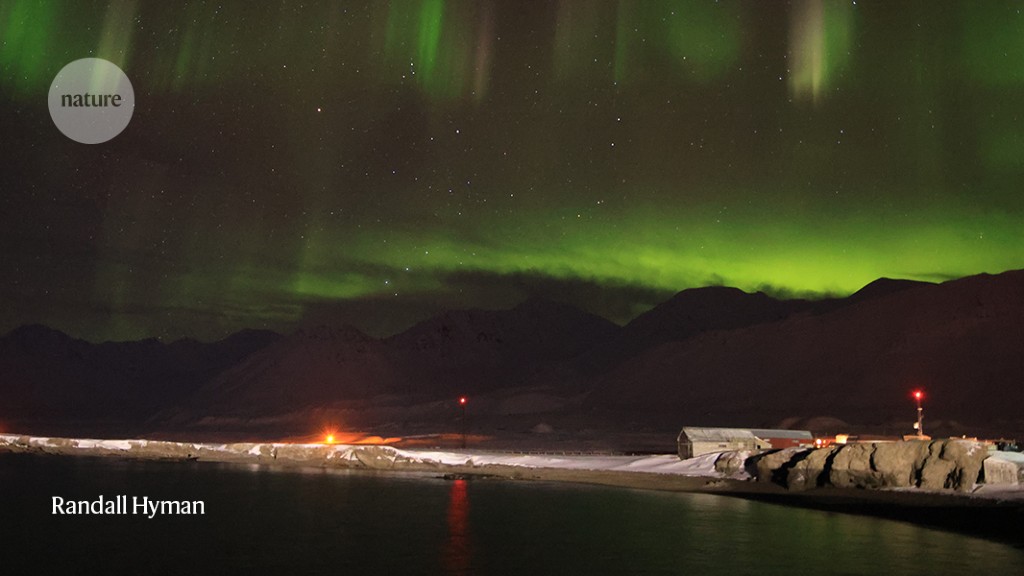
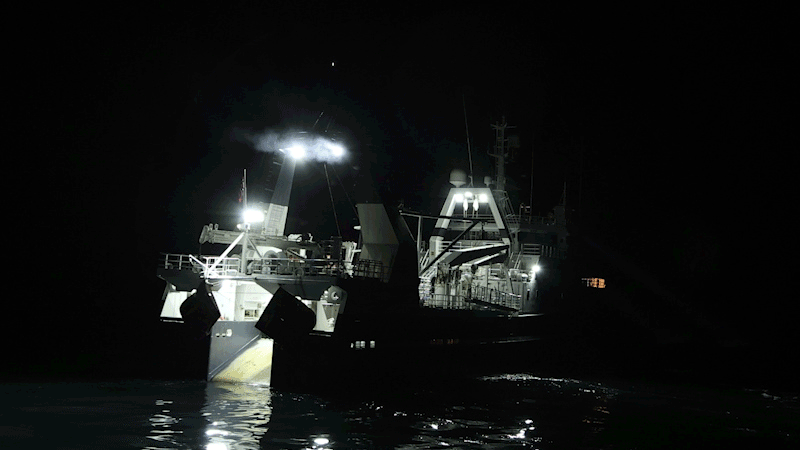
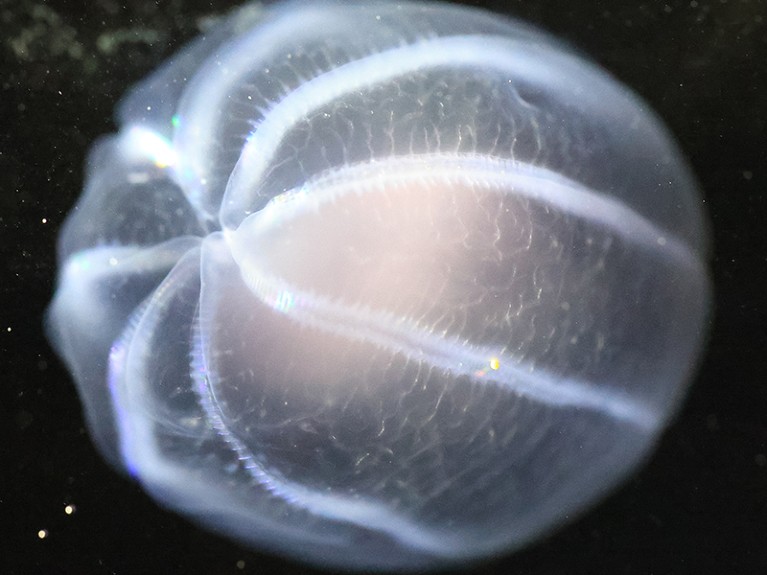
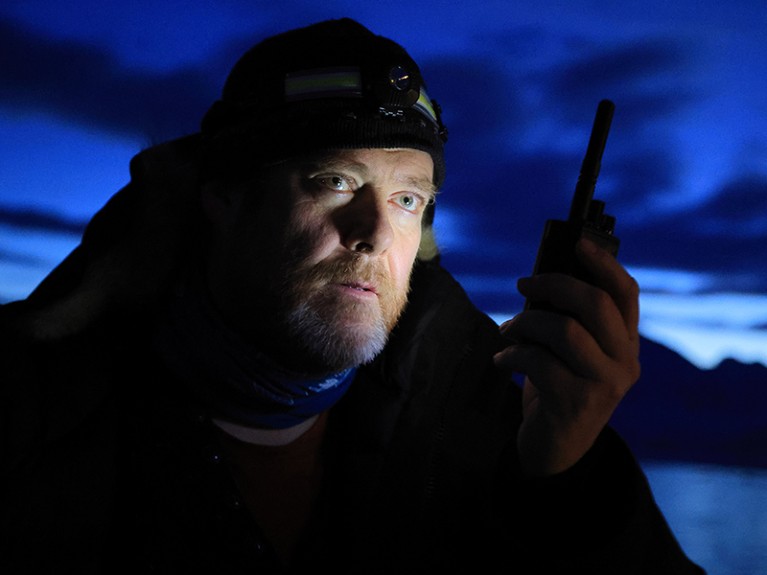
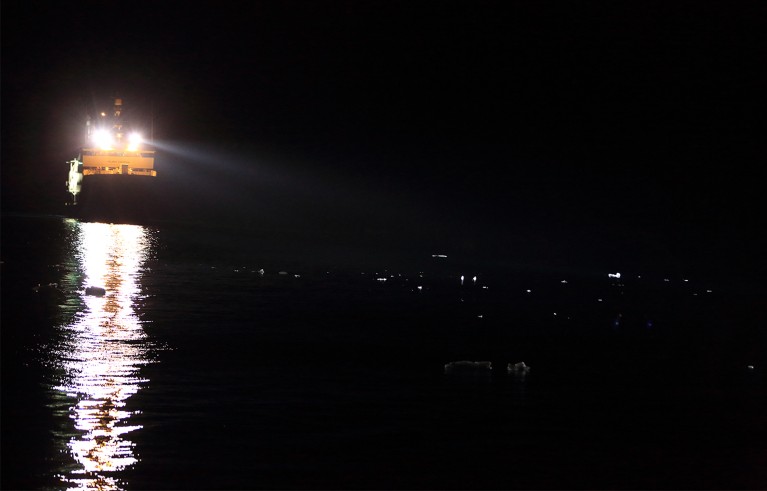
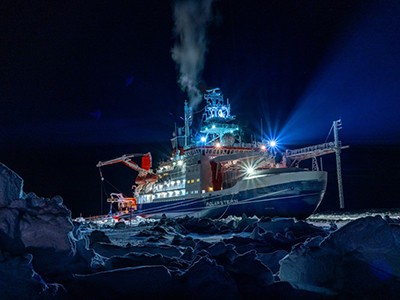

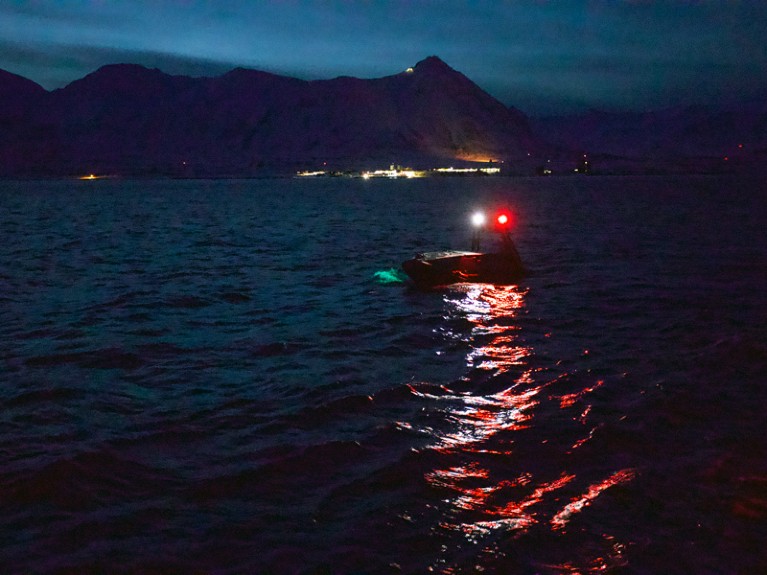
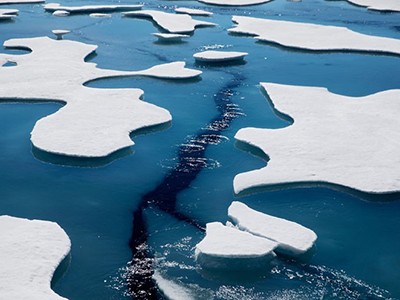
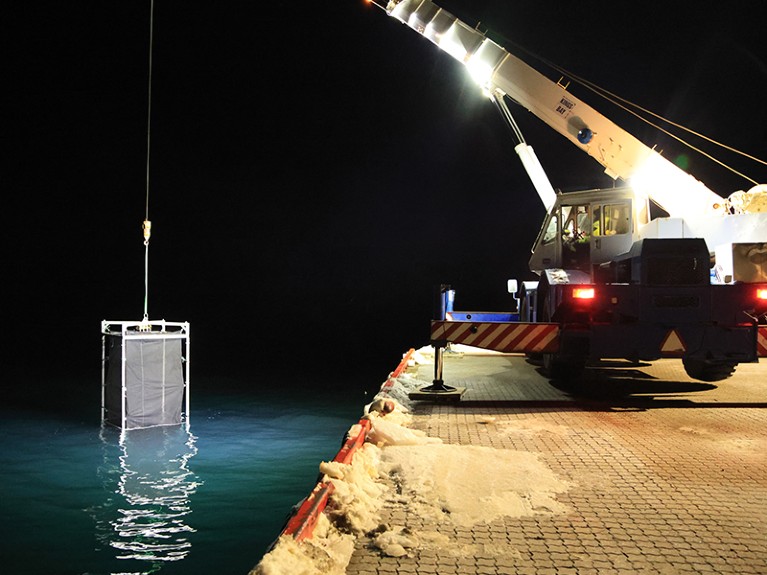
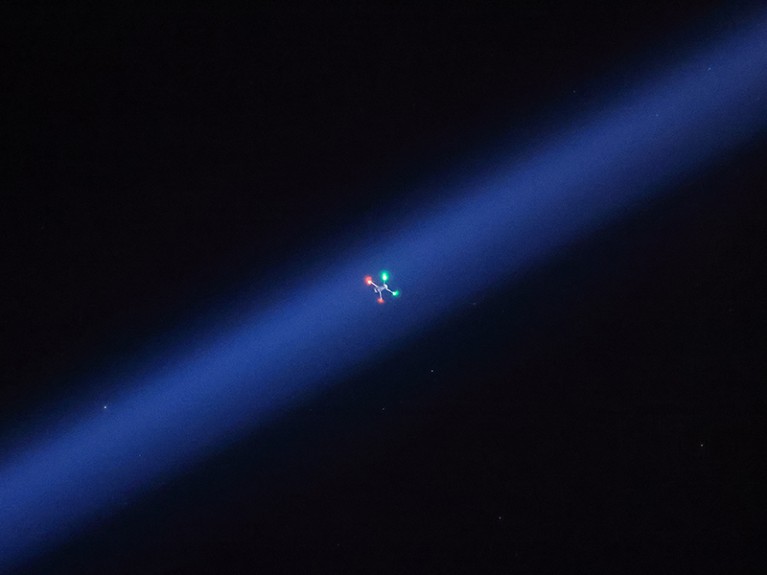
More News
Quantum control of a cat qubit with bit-flip times exceeding ten seconds – Nature
Venus water loss is dominated by HCO+ dissociative recombination – Nature
Microbubble ultrasound maps hidden signs of heart disease